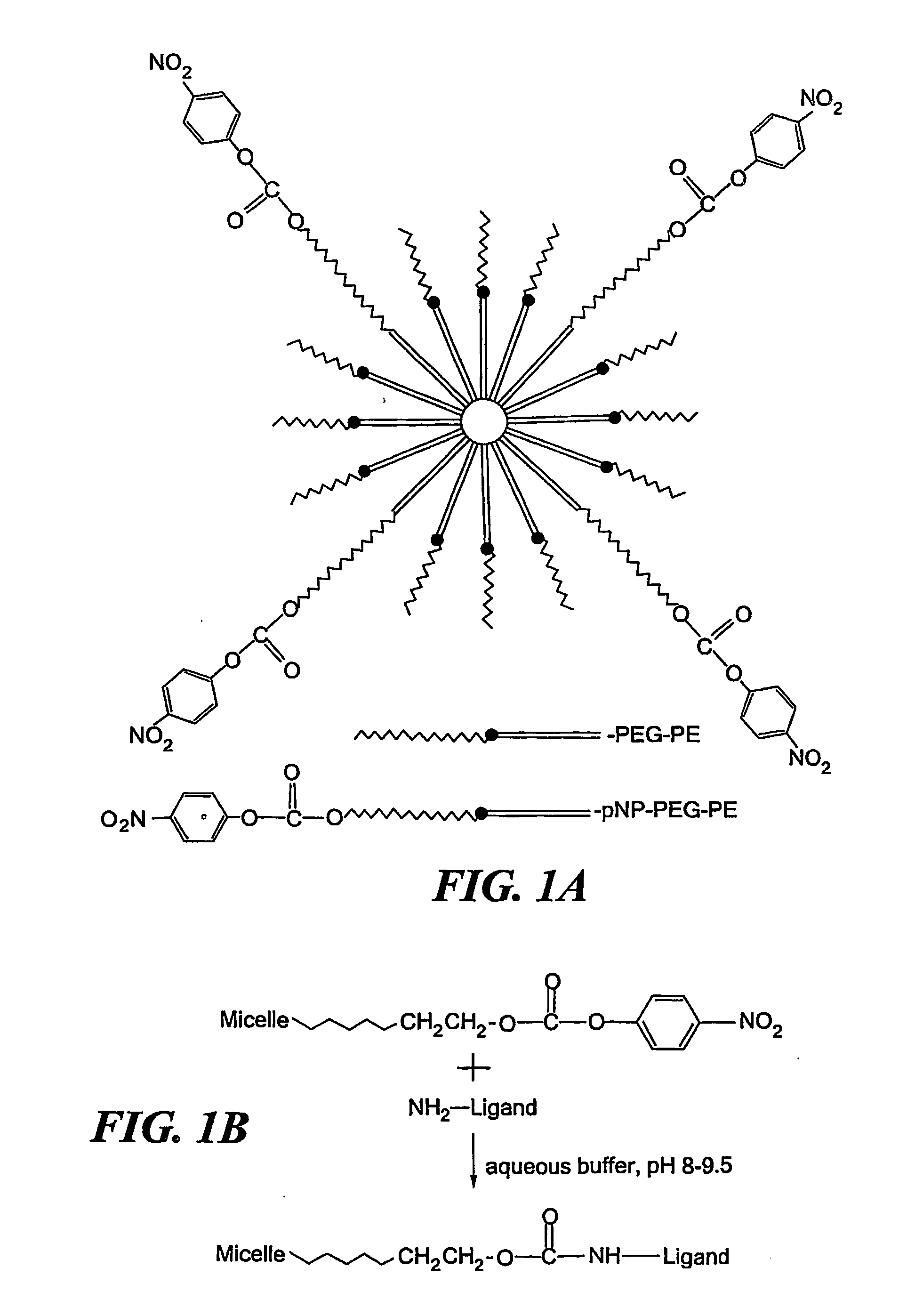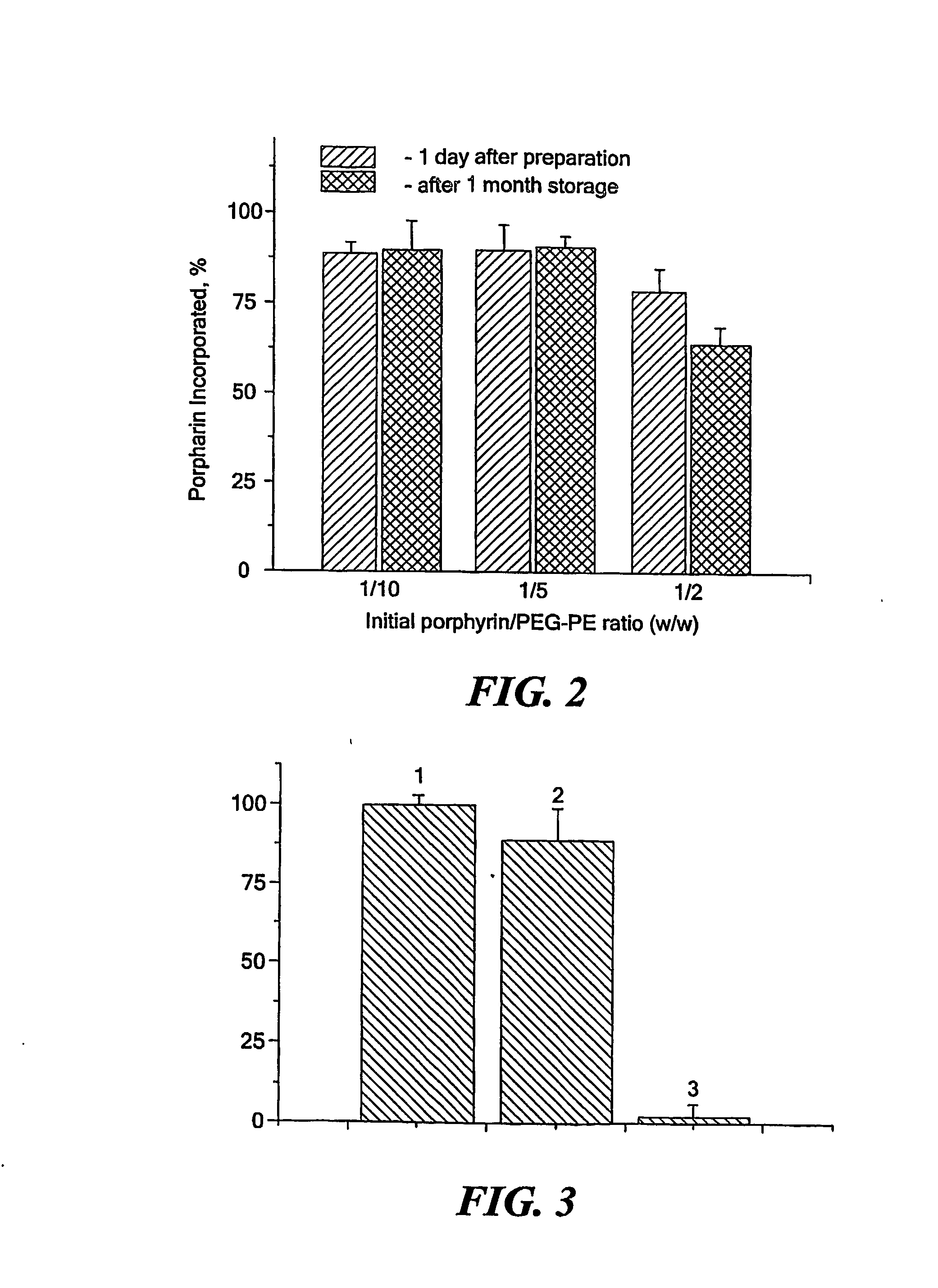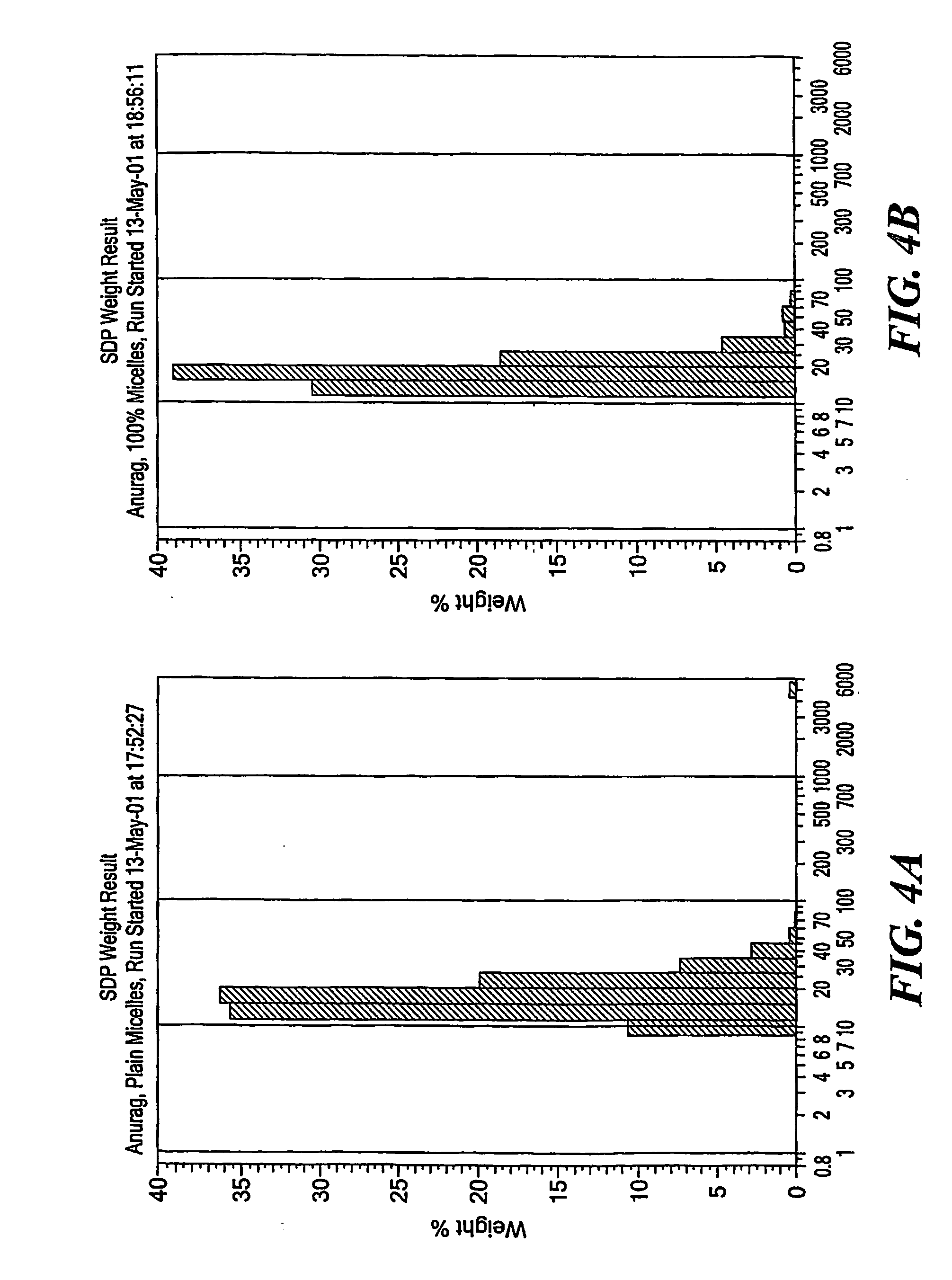Micelle delivery system loaded with a pharmaceutical agent
- Summary
- Abstract
- Description
- Claims
- Application Information
AI Technical Summary
Benefits of technology
Problems solved by technology
Method used
Image
Examples
examples
[0053] The following examples are presented to illustrate the advantages of the present invention and to assist one of ordinary skill in making and using the same. These examples are not intended in any way otherwise to limit the scope of the disclosure.
Exemplary Materials and Methods
[0054] Materials. Phosphatidylethanolamine (PE), poly(ethylene glycol)-2000-PE (PEG-PE) and PE-(lissamine-rhodamineB) (Rh-PE) were from Avanti Polar Lipids (Alabaster, Ala). p-Nitrophenylcarbonyl-PEG-PE was synthesized as described (Torchilin et al., 2001). Diethylenetriaminepentaacetic acid-PE conjugate (DTPA-PE) for radiolabeling micelles with 111In was synthesized as in (Grant et al., 1989). RPMI medium 1640 (RPMI), Eagle's minimal essential medium (EMEM), modified Eagle's medium (DMEM), serum-free medium, and heat inactivated fetal bovine serum (FBS) were from Cellgro (Herndon, Va.). 111In with specific radioactivity of 395 Ci / mg was from Perkin-Elmer Life Sciences (Boston, Mass.). Cancer-specifi...
example i
Exemplary Polymer Hicelles Loaded with Porphyrin
[0069] Porphyrin dissolved in methanol was added to a solution of PEG-PE in chloroform to obtain various final ratios of components. Organic solvents were removed under vacuum. Micelles were formed by shaking the PEG-PE / porphyrin film obtained in the presence of an aqueous buffer. Excess of porphyrin not incorporated into the micelles was separated by filtration of the micelle suspension through 0.2 μm filter. Concentration of porphyrin in micellar phase was estimated following the fluorescence at the excitation wavelength of 653 nm and the emission wavelength of 674 nm (F635 / 674) after 100-200-fold dilution of the samples in methanol.
[0070] The results obtained are shown in FIG. 2. At initial porphyrin / PEG-PE weight ratio of up to 1 / 5, the agent incorporates into micelles with close to 100% efficiency. The efficiency decreases to about 80% at initial weight ratio of 1 / 2. In the latter preparation the drug / PEG-PE in the resultant mic...
example ii
Exemplary Polymer Hicelles Loaded with Tamoxifen
[0071] Tamoxifen dissolved in methanol was added to the solution of PEG-PE in chloroform to obtain the drug / PEG-PE molar ratio of 1:1. Organic solvents were evaporated and micelles were formed by shaking the tamoxifen / PE-PEG film obtained in the presence of an aqueous buffer at 50° C. Free tamoxifen was removed by filtration through 0.22 μm filters. Tamoxifen was quantified using the assay procedure for diethylstilbesterol (United States Pharmacopeal Convention, 2000).
[0072] The results obtained are shown in FIG. 3. It can be seen that more than 95% of tamoxifen was incorporated into PEG-PE micelles. Incorporation of Tamoxifen does not change the size of the micelles significantly (FIG. 4). The results obtained demonstrate that PEG-PE micelles may be prepared with tamoxifen up to 1:1 drug / polymer molar ratio with preservation typical for the micelle size.
PUM
| Property | Measurement | Unit |
|---|---|---|
| Mass | aaaaa | aaaaa |
| Mass | aaaaa | aaaaa |
| Mass | aaaaa | aaaaa |
Abstract
Description
Claims
Application Information
 Login to View More
Login to View More - R&D
- Intellectual Property
- Life Sciences
- Materials
- Tech Scout
- Unparalleled Data Quality
- Higher Quality Content
- 60% Fewer Hallucinations
Browse by: Latest US Patents, China's latest patents, Technical Efficacy Thesaurus, Application Domain, Technology Topic, Popular Technical Reports.
© 2025 PatSnap. All rights reserved.Legal|Privacy policy|Modern Slavery Act Transparency Statement|Sitemap|About US| Contact US: help@patsnap.com



